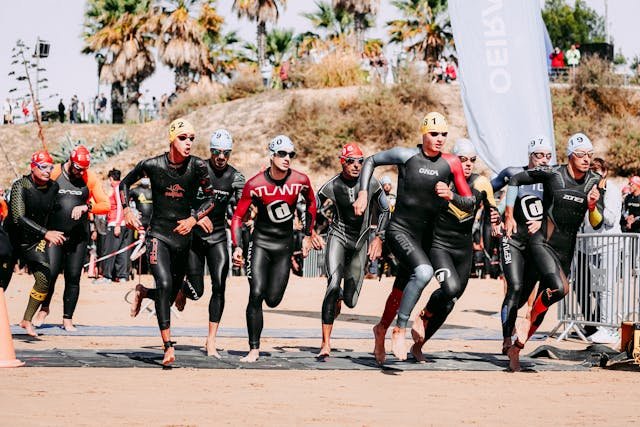
Completing a triathlon is an impressive achievement that puts your body through its paces. After enduring the long swim, challenging bike ride, and demanding run, it’s important to celebrate your success while also prioritizing recovery. Here’s how to create an effective triathlon recovery routine with these seven holistic tips.
1. Take an Ice Bath
After a long day, a hot bath may seem appealing, but your body craves the revitalizing coolness of an ice bath. Make it a priority to immerse yourself in cold water right after your triathlon to reap its significant benefits.
Cold water immersion helps reduce swelling and inhibits tissue breakdown by expelling lactic acid from your muscles. The time you spend in the ice bath should be tailored to your tolerance, but a general guideline is to limit it to 20 minutes.
2. Replenish Your Energy
Your triathlon has drained your energy, so it’s essential to refuel with a nutritious and satisfying meal. Focus on consuming a combination of protein and carbohydrates to restore your amino acids and glucose levels.
Your post-race meal options are vast, but you can keep it simple. A peanut butter and jelly sandwich offers a good balance of carbohydrates, sugar, protein, and fat. If you’re ready for something more substantial, opt for grilled chicken, sweet potatoes, vegetables, and other healthy choices.
3. Stay Hydrated
The physical exertion during your triathlon also leads to significant fluid loss. It’s crucial to rehydrate properly after the race. To calculate your fluid needs, figure out how much water weight you lost during the event and aim to drink two cups for every pound lost.
While hydration is key, avoid excessive intake to prevent conditions like hyponatremia and overhydration. Be mindful of your kidneys’ capacity and pay attention to your body; a good indicator of hydration status is the color of your urine.
4. Allow for Recovery Days
Recovery times vary based on race length and intensity. Shorter races may require just a few rest days, while longer events can necessitate several weeks of reduced activity. It’s critical to give your body ample time to recuperate to avoid injury.
For shorter races, consider three full days of rest before gradually returning to your training regime. For more strenuous events, like an Ironman 70.3, you may need four to five days of rest followed by three weeks of lighter workouts.
5. Pay Attention to the Details
While rest and nutrition are crucial, a holistic recovery plan considers all aspects of your well-being. Prolonged swims require attention to your eyes, especially if you wear contacts, as saltwater can cause irritation.
If you wore contacts during the race, soak them in a sterile solution for at least 24 hours post-race. Don’t forget about skincare; rinsing off and exfoliating after the race will help eliminate dead skin cells.
6. Prioritize Mental Health
Physical exercise benefits your brain by releasing endorphins, but the rigors of training and racing can take a toll on your mental health. After your triathlon, take time to practice self-care and recharge mentally.
Engage in activities that yield psychological benefits. Journaling about your race experience can provide valuable insights into your performance and improvement opportunities. Other ways to boost mental well-being include meditation, pursuing hobbies, and celebrating your achievements.
7. Schedule a Massage
While physical and mental recovery is largely in your hands, seeking external support can expedite the process. After the triathlon, consider getting a massage to aid in your body’s recovery before diving back into training.
Massage therapy enhances blood circulation, delivering oxygen and nutrients to your muscles. This improved blood flow can speed up recovery, alleviate stiffness, and maintain muscle elasticity, reducing the risk of injury.
Effective Recovery After a Triathlon
Your recovery routine post-triathlon is crucial in preparing you for future races. Listen to your body and provide it with the necessary care it needs to recover. If you feel you need support, consider creating or joining a community of fellow triathletes who can share recovery tips and experiences.







